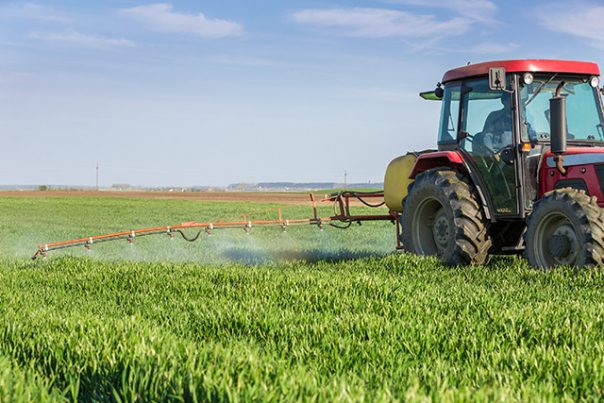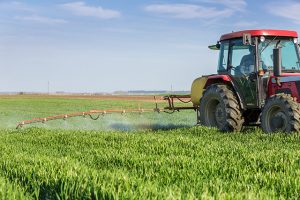
Fosetyl aluminium — toxicity, side effects, diseases and environmental impacts
Wednesday, November 29, 2017 by Michelle Simmons
http://www.naturalpedia.com/fosetyl-aluminium-toxicity-side-effects-diseases-and-environmental-impacts.html

Fosetyl aluminium, which is an organophosphate, is a systemic fungicide that prevents the spore germination and penetration of pathogen into the plant through blocking its mycelial growth and spore production. Moreover, it improves the natural defense mechanism of the plant to fight diseases. This type of fungicide is used to control Phytophthora and Pythium root and crown rots, Pseudomonas blister spots, and alternaria in a wide variety of plants, such as grapes, apples, pears, raspberry, blackberry, strawberry, ginseng, lettuce, onion, broccoli, tobacco, turf, ornamental plants, pineapple, coconut, rubber, cacao, and orchids. It is absorbed by the the target plant through its leaves or roots with translocation both up and down inside the plant. This fungicide can be in the forms of wettable granules or wettable powder that are combined together with water and applied as a foliar spray or used as a seed treatment. Fosetyl aluminium has the molecular formula of C6H18AlO9P3.

List of known side effects
There are only a few known side effects that fosetyl aluminium can cause to humans. One of these is that it can cause severe eye damage and serious eye irritation. As an irritant, it may cause inflammation and swelling, depending on the exposure amounts and concentration. If inhaled, it may cause cough, tachypnea, and wheezing. If ingested, it may cause nausea, vomiting, and diarrhea. Moreover, skin exposure to the chemical may cause redness, swelling, and pain.
For i’s environmental side effects, fosetyl aluminium is toxic to fish, birds, honey bees, aquatic plants, and invertebrates.
Body systems affected by fosetyl aluminium
Fosetyl aluminium can adversely affect the ocular system as has been found to cause serious eye irritation. This fungicide can also affect the integumentary, digestive, and respiratory systems.
Items that can contain fosetyl aluminium
Fosetyl aluminium can be found in fungicide products that are used to control different plant pathogens such as Phytophthora and Pythium root and crown rots, Pseudomonas blister spots, and alternaria in different plants. Some of the products that can contain fosetyl aluminium are sold under the trade names of Aliette 80 WG, Fullstop, Pilarfarm, and Chipco Aliette WDG.
How to avoid fosetyl aluminium
There are several ways on how to protect oneself from fosetyl aluminium, particularly for workers who handle the chemical. The exposure routes of the chemical is through skin contact, eye contact, inhalation, and ingestion. One of these ways is to immediately remove all soiled and contaminated clothing. Another way to control exposure to the chemical is to wash hands before breaks and at the end of work. Moreover, to avoid breathing in the fungicide, wear an appropriate respirator.
To avoid contact with the skin, wear protective gloves that is impermeable and resistant to the product. Since fosetyl aluminium is especially harmful to the eyes, an eye protection is needed. The eyes can be protected by wearing tightly sealed goggles. Lastly, for overall body and skin protection, it is recommended to wear long-sleeved shirt, long pants, and waterproof shoes and socks.
Where to learn more
Summary
Fosetyl aluminium is a fungicide used to control different plant pathogens such as Phytophthora and Pythium root and crown rots, Pseudomonas blister spots, and alternaria in grapes, apples, pears, raspberry, blackberry, strawberry, ginseng, lettuce, onion, broccoli, tobacco, turf, ornamental plants, pineapple, coconut, rubber, cacao, and orchids.
Fosetyl aluminium can be irritating to the eyes, skin, gastrointestinal tract, and respiratory tract.
Fosetyl aluminium can cause inflammation and swelling.
Fosetyl aluminium is toxic to fish, birds, honey bees, aquatic plants, and invertebrates.
Sources include:
Tagged Under: Tags: Fosetyl aluminium





